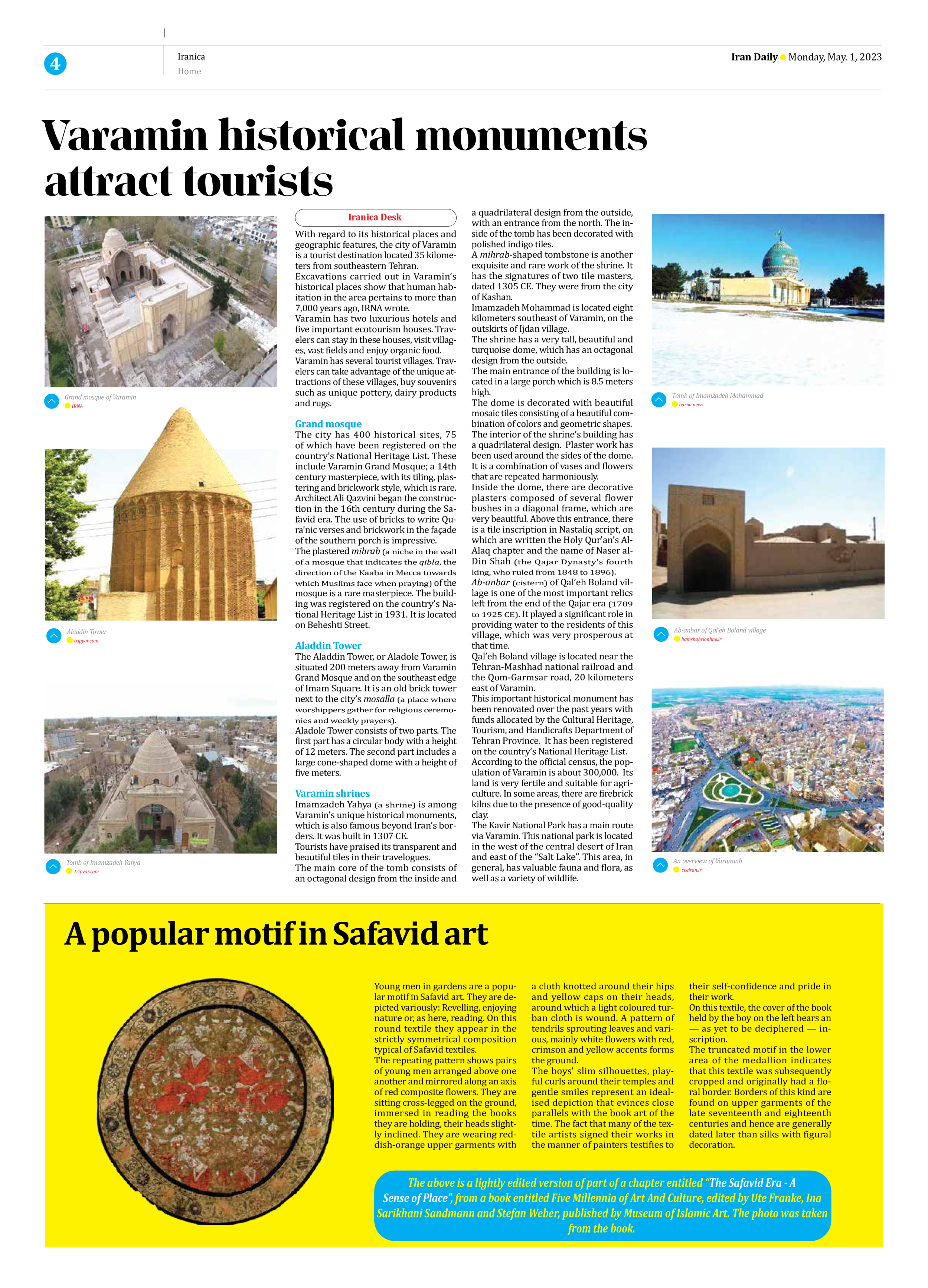
A popular motif in Safavid art
Young men in gardens are a popular motif in Safavid art. They are depicted variously: Revelling, enjoying nature or, as here, reading. On this round textile they appear in the strictly symmetrical composition typical of Safavid textiles.
The repeating pattern shows pairs of young men arranged above one another and mirrored along an axis of red composite flowers. They are sitting cross-legged on the ground, immersed in reading the books they are holding, their heads slightly inclined. They are wearing reddish-orange upper garments with a cloth knotted around their hips and yellow caps on their heads, around which a light coloured turban cloth is wound. A pattern of tendrils sprouting leaves and various, mainly white flowers with red, crimson and yellow accents forms the ground.
The boys’ slim silhouettes, playful curls around their temples and gentle smiles represent an idealised depiction that evinces close parallels with the book art of the time. The fact that many of the textile artists signed their works in the manner of painters testifies to their self-confidence and pride in their work.
On this textile, the cover of the book held by the boy on the left bears an — as yet to be deciphered — inscription.
The truncated motif in the lower area of the medallion indicates that this textile was subsequently cropped and originally had a floral border. Borders of this kind are found on upper garments of the late seventeenth and eighteenth centuries and hence are generally dated later than silks with figural decoration.
The above is a lightly edited version of part of a chapter entitled “The Safavid Era - A Sense of Place”, from a book entitled Five Millennia of Art And Culture, edited by Ute Franke, Ina Sarikhani Sandmann and Stefan Weber, published by Museum of Islamic Art. The photo was taken from the book.







